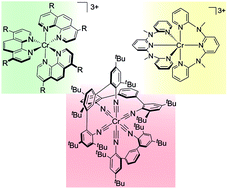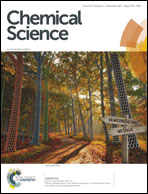Chromium complexes for luminescence, solar cells, photoredox catalysis, upconversion, and phototriggered NO release
Abstract
Some complexes of Cr(III) and Cr(0) have long been known to exhibit interesting photophysical and photochemical properties, but in the past few years important conceptual progress was made. This Perspective focuses on the recent developments of Cr(III) complexes as luminophores and dyes for solar cells, their application in photoredox catalysis, their use as sensitizers in upconversion processes, and their performance as photochemical nitric oxide sources. The example of a luminescent Cr(0) isocyanide complex illustrates the possibility of obtaining photoactive analogues of d6 metal complexes that are commonly made from precious metals such as Ru(II) or Ir(III). The studies highlighted herein illustrate the favorable excited-state properties of robust first-row transition metal complexes with broad application potential.

- This article is part of the themed collections: Editors’ Choice Collection and Collection to celebrate our diverse and global authorship


 Please wait while we load your content...
Please wait while we load your content...